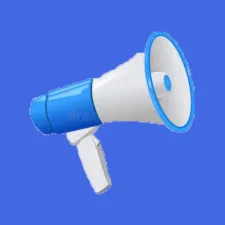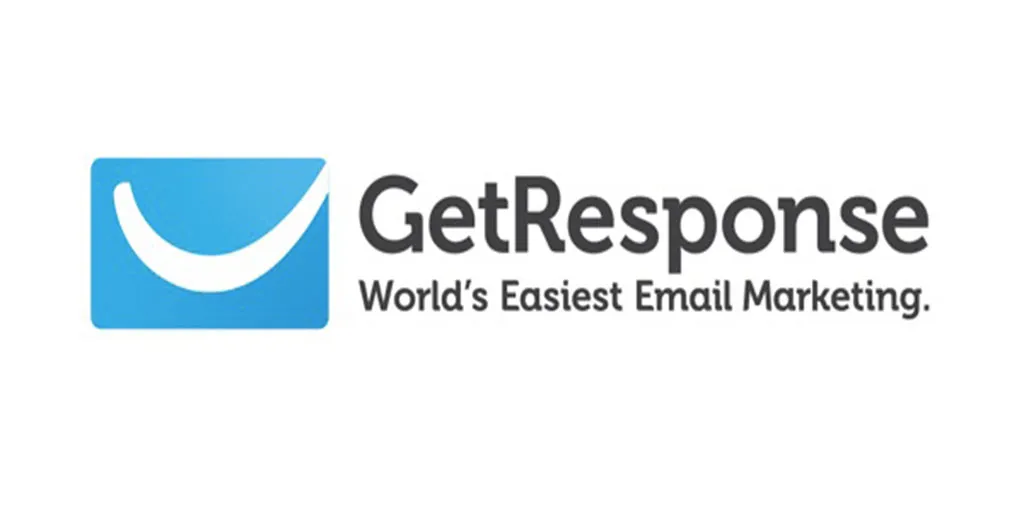How to Start a Blog That Makes Money (The Honest Truth No One Tells You)

Hey there, future blogging superstar! So, you’ve heard the whispers, seen the success stories, and perhaps even dipped your toes into the world of blogging. You’ve got ideas bubbling, a passion to share, and that burning desire to turn your words into actual income. But then… crickets. Or worse, a tumbleweed blowing across your analytics dashboard.
You’re not alone. I’ve been there, and so have countless others. The internet is flooded with advice, much of it conflicting, and it’s easy to feel lost in the noise. That's why we're here today. Blogging is trending again in 2025 as more people look for side hustles and ways to build something of their own. This post isn't just another guide; it's a mentor cheering you on, offering a dose of tough love, and equipping you to avoid the early pitfalls that sink most aspiring bloggers.
The truth? Consistency and genuine connection—not chasing trends—are the real keys to building a profitable blog. Most people give up too soon, but with the right mindset, any blog can become a successful business. Let's make sure yours is one of them.
Why Most Blogs Never Make Money (And How to Avoid Common Traps)
Let's get real for a moment. You probably know a few people who started a blog with big dreams, only to abandon it a few months later. Or perhaps you've been there yourself. So, what gives? Why do so many blogs fail to make a dime, let alone become a sustainable income source?
It usually boils down to a few critical errors:
- The "Build It and They Will Come" Fallacy: This is perhaps the biggest trap. You create beautiful content, you hit "publish," and then you wait. And wait. And wait. Without a proactive strategy to drive traffic and connect with your audience, your amazing content is like a billboard in the desert.
- How to avoid it: From day one, think about how people will discover your blog. Are you focusing on SEO? Promoting on social media? Building an email list? You need a multi-pronged approach to visibility.
- Chasing Trends Instead of Solving Problems: The latest viral topic might get you a quick burst of traffic, but if it doesn't align with your niche or solve a genuine problem for your target audience, that traffic won't stick around or convert.
- How to avoid it: Focus on timeless content that addresses core needs and pain points of your specific audience. Become the go-to resource for a particular problem, not just a news aggregator.
- Inconsistent Publishing: Life gets busy, inspiration wanes, and suddenly weeks turn into months without a new post. Search engines penalize inconsistency, and your audience forgets about you.
- How to avoid it: Develop a realistic content calendar. Start small if you need to (even once a month is better than nothing consistent), but commit to it. Quality over quantity, but quantity with consistency is the ultimate goal.
- No Clear Monetization Strategy: Many bloggers start writing because they love it, which is fantastic! But if the goal is to make money, you need to think about how that money will flow in from the beginning.
- How to avoid it: While you shouldn't slap ads everywhere on day one, have a general idea of your monetization path. Will it be affiliate marketing? Selling your own products? Services? This clarity will influence your content creation.
- Focusing on Perfection Over Progress: You get stuck tweaking your logo, agonizing over the perfect font, or endlessly rewriting your "About Me" page. Meanwhile, you're not publishing content or connecting with readers.
- How to avoid it: Embrace "done is better than perfect." Get your content out there, learn from your audience's reactions, and iterate. Your blog will evolve; it doesn't have to be perfect from the start.
The Importance of Audience Building Before Monetization
This might sound counterintuitive if your goal is to start a blog that makes money, but trust me on this: you cannot monetize an audience you don't have. And more importantly, you can't monetize an audience you don't understand.
Think of it like this: you wouldn't open a shop in the middle of nowhere without knowing who your customers are or how to get them there, right? Your blog is no different.
Your audience isn't just a number; it's a community of real people with real needs, questions, and desires. Before you even think about selling anything, your primary mission is to:
- Identify Your Ideal Reader: Who are you trying to help? What are their demographics, interests, pain points, and aspirations? The more specific you are, the better you can tailor your content. Don't try to appeal to everyone; appeal strongly to someone.
- Provide Immense Value: This is the bedrock of audience building. Consistently create content that educates, entertains, inspires, or solves a problem for your ideal reader. Give away your best stuff for free. Answer their unspoken questions. Be their trusted resource.
- Foster Connection and Trust: Engage with comments, respond to emails, and be present on social media where your audience hangs out. Share your struggles and successes. People connect with authenticity. They buy from people they trust.
- Build an Email List from Day One: Seriously, if there's one piece of advice you take from this entire post, let it be this. Your email list is your most valuable asset. Unlike social media algorithms that can change on a whim, your email list gives you direct access to your most engaged readers. Offer an irresistible "lead magnet" (a free guide, checklist, template) in exchange for their email address.
Why is this so crucial for making money? Because monetization isn't about pushing products; it's about offering solutions to problems your audience already has, from a trusted source. If you've spent months or years building that trust and understanding their needs, selling becomes a natural extension of your helpfulness, not a jarring interruption.
Monetization Strategies That Actually Work Today
Alright, let's talk about the fun part: how to make money blogging. Forget the get-rich-quick schemes. Sustainable income comes from diversified strategies that align with your content and audience.
Here are the most effective ways to monetize your blog today:
- Affiliate Marketing (The Starter's Favorite):
- How it works: You promote products or services created by other companies, and when someone buys through your unique affiliate link, you earn a commission.
- Why it works: It's fantastic for beginners because you don't need to create your own products or handle customer service. You can recommend tools, books, courses, or physical products that you genuinely use and love.
- Key to success: Authenticity is paramount. Only promote products you truly believe in and that are genuinely helpful to your audience. Disclose your affiliate relationships clearly. Your trust is your biggest asset here.
- Example: A food blogger promoting their favorite kitchen gadgets on Amazon. An SEO blogger recommending a specific keyword research tool.
- Selling Your Own Digital Products (The Scalable Powerhouse):
- How it works: You create your own products like e-books, online courses, templates, printables, workshops, or membership sites, and sell them directly to your audience.
- Why it works: This is where you keep 100% of the profit (minus transaction fees) and establish yourself as an authority. It's highly scalable once created.
- Key to success: This requires a deep understanding of your audience's biggest pain points. What problems can you solve with your unique expertise? Start small – an e-book or a simple template can be your first product.
- Example: A fitness blogger selling a workout program. A productivity blogger selling a daily planner. You, selling your own courses on SEO, email marketing, or marketing de afiliados!
- Advertising (Passive Income, But Needs Volume):
- How it works: You display ads on your blog, and you get paid based on impressions (how many people see them) or clicks. Google AdSense is a common starting point, but higher-paying ad networks (like Mediavine or AdThrive) require significant traffic (usually 50,000+ sessions per month).
- Why it works: It's passive income once set up.
- Key to success: This is a volume game. You need a lot of traffic to make substantial money from ads. Don't rely on this as your sole income stream, especially at the beginning, as it can detract from user experience if overdone.
- Example: Any large blog with hundreds of thousands of monthly visitors often relies heavily on display advertising.
- Sponsored Content & Brand Partnerships (Lucrative, But Needs Authority):
- How it works: Brands pay you to create content (blog posts, social media mentions, videos) that features their product or service.
- Why it works: Can be very lucrative per project. It allows you to work with brands you admire.
- Key to success: You need an engaged audience and a strong brand presence. Brands want to partner with bloggers who have influence and whose audience aligns with their target market. Be transparent about sponsored content.
- Example: A travel blogger partnering with a hotel chain for a sponsored review. A tech blogger reviewing a new gadget from a specific brand.
- Selling Services (Direct Income, But Not Scalable):
- How it works: You use your blog to showcase your expertise and attract clients for services like coaching, consulting, freelance writing, web design, or virtual assistance.
- Why it works: It can provide immediate income and is a great way to validate your skills and build a reputation.
- Key to success: Your blog acts as your portfolio and lead generation tool. Clearly define your services and what problems you solve for clients.
- Example: A marketing blog offering SEO consulting services. A personal finance blog offering budgeting coaching.
The Golden Rule of Monetization: Start with one or two strategies, master them, and then diversify. Don't try to implement all of them at once. For beginners, affiliate marketing and eventually selling your own digital products are often the most effective paths to how to make money blogging.
The Mindset Shift From Hobbyist to Business Owner
This is perhaps the most crucial section, because without the right mindset, even the best strategies will fall flat. If you truly want to make a blog and make money, you need to stop thinking of it as a hobby and start treating it like a business.
This isn't about losing your passion or creativity. Quite the opposite! It's about channeling that passion into a structured, strategic approach that yields tangible results.
Here’s the mindset shift you need to embrace:
- From "Writing When I Feel Like It" to "Showing Up Consistently": A business has operations, deadlines, and commitments. Your blog needs the same discipline. Schedule your writing, publishing, and promotion like you would any other business task. This is the consistency we talked about.
- From "My Passion Project" to "Serving My Audience": While your passion is the fuel, your audience is the engine. A business exists to solve a problem or fulfill a need for its customers. Your blog should do the same. Constantly ask: "How can I better serve my readers today?"
- From "Hoping for the Best" to "Measuring and Iterating": Businesses track their performance. They look at sales figures, customer feedback, and marketing ROI. You need to do the same with your blog. Pay attention to your analytics: Which posts get the most traffic? Where are people dropping off? What are they searching for? Use this data to improve.
- From "Free Content Only" to "Value Exchange": It's wonderful to give away free content, but a business also offers premium solutions. Understand that your expertise has value, and your audience, once trust is established, will be willing to pay for it if it solves a significant problem for them.
- From "Working In My Business" to "Working ON My Business": Don't just spend all your time writing blog posts. Allocate time to strategize, learn new skills (SEO, email marketing, copywriting), network with other bloggers, and plan your monetization. This is the business owner part.
- Embrace Patience and Persistence: Building a profitable blog is a marathon, not a sprint. It takes time to build an audience, establish authority, and generate consistent income. There will be frustrating days, slow periods, and moments of doubt. The business owner's mindset pushes through these. They understand that success is built on compound effort. Most people give up too soon. Don't be most people.
Think of yourself as the CEO of your blog. You're responsible for content creation, marketing, customer service (responding to comments/emails), and financial strategy. It might feel like a lot at first, but with each step, you'll gain confidence and clarity.
Ready to Make Your Blog a Business?
You've got the insights, the warnings, and the roadmap. Now it's time for action. Remember that powerful hook: Consistency and genuine connection—not chasing trends—are the real keys to building a profitable blog.
Don't let analysis paralysis stop you. Start small, stay consistent, and focus on providing immense value to your audience. Your blog has the potential to be more than just an online journal; it can be a thriving, profitable business that gives you the freedom and impact you crave.
What's the very first step you're going to take after reading this? Share your plan in the comments below! Let's build something amazing together.



